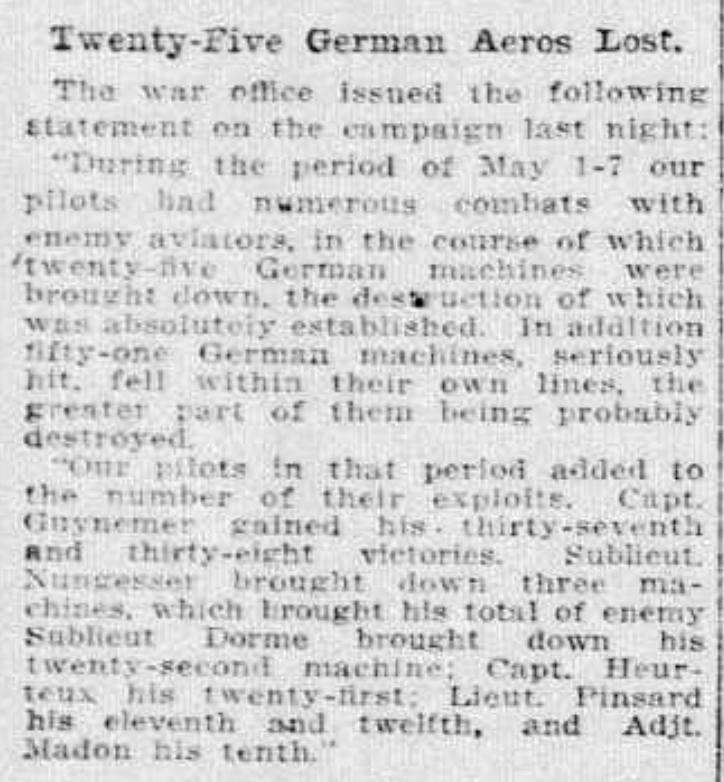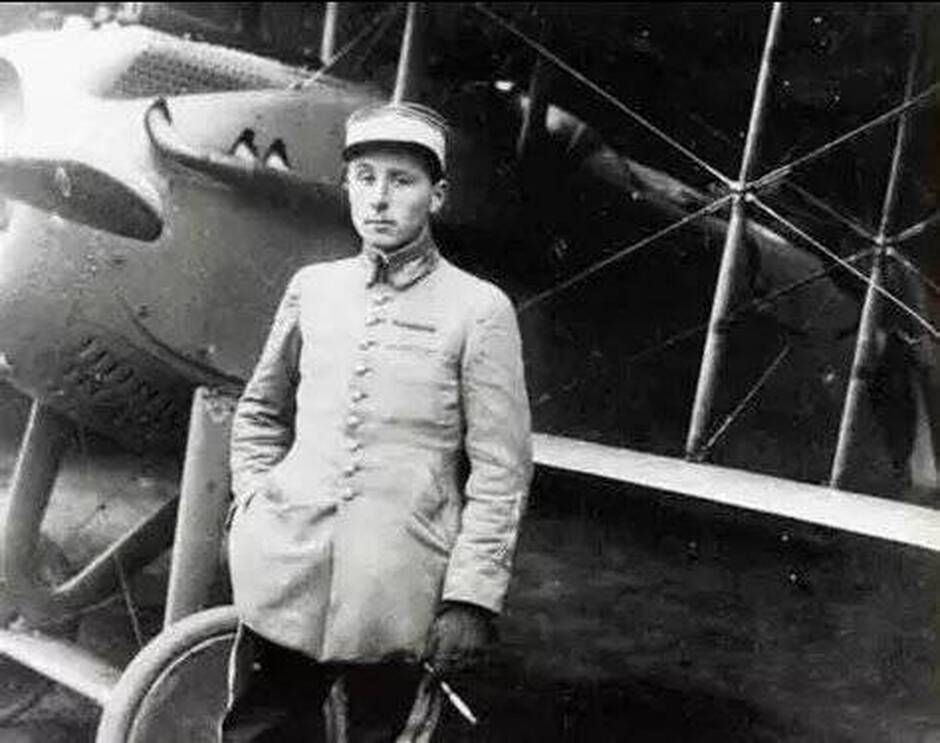Combat AérienNumerous notables are named in today's news of aerial combat between French and German flyers. Among the acknowledged aces is Guynemer, Nungesser, Dorme, Pinsard, Madon and Alfred Marie-Joseph Heurtaux. Heurtaux claimed his twenty-first and final victory on the morning of 4 May. While flying for
Escadrille Sps.3 over Beaurieux he managed to down an Albatros C type.
(from the Evening Star, 9 May 1917):

What is not reported is that the very next day Heurtaux was in a wicked dogfight with nine Albatros D.IIIs, one being piloted by Ernst Udet (who headlined here two weeks back:
https://forum.ww1aircraftmodels.com/index.php?topic=14363.msg264793;topicseen#msg264793). Udet clipped Heurtaux with multiple bullets, hitting him through both cheeks and both thighs, and also grazing his head. "
He eventually returned to duty, but did not score again. A second serious wounding in September 1917 sidelined him for the remainder of the war. Indeed, he was fortunate to survive a bullet through his femoral artery. An ordinary bullet would have proved fatal, but the incendiary round that hit him cauterized the wound, sealing off hemorrhaging. He struggled back to Allied lines, and lived." (via wikipedia)

(image via ouest-france.fr)
 Footnote
Footnote: During the Second World War Heurtaux joined the French Resistance before being captured by the German Gestapo and imprisoned in Buchenwald death camp. He survived and ultimately lived long enough to have heard Band Aids' song 'Do They Know It's Christmas' top the international music charts before dying at age 92 in December 1985.